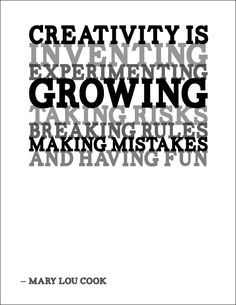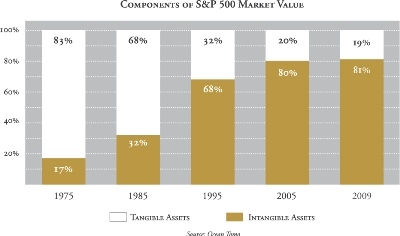Jeremie Averous's Blog, page 89
June 4, 2016
How to Create Value by Breaking Patterns: Airbnb and Others
Following our post on the need to break patterns to create value, the example of Airbnb is quite interesting.
 At the core, the concept is about breaking a basic survival pattern, repeated from generation to generation: don’t let unknown strangers in your house!
At the core, the concept is about breaking a basic survival pattern, repeated from generation to generation: don’t let unknown strangers in your house!
It was only by providing sufficient assurance that things will turn out fine that this pattern could be broken (thanks to the inter-mediation provided by the platform). However basically the value released by the platform is at the core, breaking a deeply ingrained pattern.
It is a bit the same with the more advanced Uber applications (survival pattern: don’t enter the car of an unknown stranger and be driven somewhere!) and most of the disruptive, successful companies that have emerged recently (for Google, the survival pattern was: don’t give all your personal information to an external company!).
Breaking patterns can thus release great value if properly done and with the assurance that safety is still provided. When do you start your own disruption?

June 2, 2016
Why Thriving Requires Us to Overcome Our Mind Patterns Sometimes
Our mind patterns have been built to benefit our survival. To thrive we need to be able overcome those patterns.
 Our mind patterns and instinctive reactions are immensely useful – they allow us to react instantly to threats, and generally stick to proven survival reactions in our day-to-day life.
Our mind patterns and instinctive reactions are immensely useful – they allow us to react instantly to threats, and generally stick to proven survival reactions in our day-to-day life.
At the same time, they imprison and limit us in considering new situations, or finding new ways to look at common situations. We need to be able to overcome those patterns to thrive.
This is of course dangerous and better done in a situation where we are somewhat protected, and possibly not all the time.
The dilemma is, those mind patterns need to be overcome to find new value, and we still need them to cover our survival most of the time. The capability to thrive in this dilemma is the mark of the innovator.
Break your patterns consciously sometime and reap the value. When do you start?

May 31, 2016
Why We Should Consider a Situation to be a Dilemma When in Doubt
Following on our post explaining ‘Why We Are Moving From a World of Problems to a World of Dilemmas‘, let’s give ourselves some guidance when we can’t really be sure that what we are facing is a problem or a dilemma.
 The rule is simple – in doubt, treat the situation as a dilemma.
The rule is simple – in doubt, treat the situation as a dilemma.
This will force a much wider range of considerations and solutions, and will probably be more right. Consider a situation to be a problem only when it is clearly delineated and where linear thinking appears to be applicable. All the rest should be treated as dilemmas.
Dilemmas implies choice, it implies regret and it generally requires prompt action to be released. It requires character more than analytic thought. It is harder but nowadays it is often more useful to consider situations as dilemmas rather than problems.

May 28, 2016
Why We Are Moving From a World of Problems to a World of Dilemmas
One of the most interesting changes brought by the Fourth Revolution is that we are evolving from a typical world of problems to be solved (typical of the Industrial Age) to a world of dilemmas where we have to choose between options.
 The reasons for this change are numerous. One is that we all have much more choice than before and so, there are many possible solutions for a situation. This forces us to make choices. The other is that because of our increased interconnectedness, our decisions can’t be independent of the decisions of others. We are thus forced to take into account others’ actions and reactions in our analysis, and this creates dilemmas.
The reasons for this change are numerous. One is that we all have much more choice than before and so, there are many possible solutions for a situation. This forces us to make choices. The other is that because of our increased interconnectedness, our decisions can’t be independent of the decisions of others. We are thus forced to take into account others’ actions and reactions in our analysis, and this creates dilemmas.
Knowing how to resolve problems is thus not any more the key competency. Knowing how to manage dilemmas is, with all the issues related to possible regrets, and making choices in an uncertain and changing world.
Let us learn to face dilemmas better to thrive in the Collaborative Age!

May 26, 2016
Why Dealing with Complexity Requires Non-Linear Thinking
Managing complex situations cannot be dealt with linear thinking. Another sort of thinking is required: non-linear thinking, also called lateral thinking. The thing is, our education is very much oriented towards linear, inductive thinking. We definitely to up our collective game in lateral thinking.
 Lateral thinking is tough because it is related to creativity, “thinking out of the box”, and taking leaps and bounds beyond logical induction. This leads to many dead ends, failures and mistakes. But that is required to find a way in the ever-more complex world.
Lateral thinking is tough because it is related to creativity, “thinking out of the box”, and taking leaps and bounds beyond logical induction. This leads to many dead ends, failures and mistakes. But that is required to find a way in the ever-more complex world.
Staying with logical, linear, inductive thinking can only keep us within the same context that we are in. If we are to find disruptive solutions, we definitely need to adopt lateral thinking. When do you start upping your own game?

May 24, 2016
How You Can’t Be Creative Without Taking Some Risk
Being creative entails some kind of risk. But further than that, it is not possible to be creative if you don’t take risks.
 Creativity requires by definition being unconventional, exploring new spaces and ways of doing stuff. It entails risks. It means frequent failure, and pivots and new tries. It is necessarily messy.
Creativity requires by definition being unconventional, exploring new spaces and ways of doing stuff. It entails risks. It means frequent failure, and pivots and new tries. It is necessarily messy.
Is it possible to “manage” risks while being creative? Yes, and that is the job of e.g. car designers, who develop concepts and test them with members of the public. There is a fine line between managing creativity and killing it, and many organizations play with that line.
Being creative is a risky business and you must be ready for what it entails – rejection, failure, agony over concepts and ideas. Yet it is worth it. Are you ready?

May 21, 2016
How Long Complex Projects Require Regular Reorganization
One of the interesting properties of long and complex projects or programs is the need to periodically re-assess and remodel the delivery organization. Many project managers shy away from such reorganization, in particular because of rigidity often imposed by management and/or the client. However they should implement them proactively.
 The organization needs to be adapted every few months to the new focus and challenge that arises from the progressive execution of the project. Complex projects and projects that develop over a long time are not like manufacturing organizations, the scope and even the composition of the team will evolve over time and this needs to be taken into account.
The organization needs to be adapted every few months to the new focus and challenge that arises from the progressive execution of the project. Complex projects and projects that develop over a long time are not like manufacturing organizations, the scope and even the composition of the team will evolve over time and this needs to be taken into account.
Having a single, rigid, preset organization will necessarily lead to disaster and low morale as contributors struggle to make sense of the evolution of their scope and do not concentrate on what is important for the project at that particular moment.
It is sometimes interesting to have an external advisor giving a view on the adequacy of the current organization and how it should evolve.
In long complex projects, do not take the organization for granted. It needs to evolve regularly, and this is a key success factor.

May 19, 2016
How Value Shifted from Tangible to Intangible in 30 Years
One of the most visible effects of the Fourth Revolution is the shift of value from tangible to intangible. It can be measured, and it is tremendous. Organization’s value today is 80% intangible, while before 1970 it was the reverse.
 In the Industrial Age the value of organizations was machines, and other tangible assets. It is actually what is measured by traditional accounting in balance sheets. Nowadays, most of the value is intangible assets – people, knowledge, brands, ways of working. The shift has been measured and this revolution is quite impressive. It is a real indicator of the Fourth Revolution in action.
In the Industrial Age the value of organizations was machines, and other tangible assets. It is actually what is measured by traditional accounting in balance sheets. Nowadays, most of the value is intangible assets – people, knowledge, brands, ways of working. The shift has been measured and this revolution is quite impressive. It is a real indicator of the Fourth Revolution in action.
The fact that traditional accounting has not adapted to this shift (people are still a cost and not an asset..) is a major issue that will necessarily lead to problems of valuation very soon. Accounting maintains an illusion that can’t reflect the actual value of an organization. The market does somehow, but does not account for intangible benefits either (such as, allowing connections between people in the world).
The shift from tangible to intangible is a tremendous change and its aftershocks will still be felt for the decades to come in many areas.

May 17, 2016
What Moralistic Judgments Reveal on Us
We should avoid moralistic judgments. And when one is uttered it also says a lot about the person who says it: “All moralistic judgments, whether positive or negative, are tragic expressions of unmet needs” writes Marshall Rosenberg.
 This is why whenever we surprise ourself to speak out a moralistic judgment, it is a clear indicator that we should seek which of our needs is not met.
This is why whenever we surprise ourself to speak out a moralistic judgment, it is a clear indicator that we should seek which of our needs is not met.
And conversely when someone else expresses it, we need to overcome a possible rejection and figure out which of their needs requires fulfilling.
Moralistic statements are indicators of needs unmet. Let’s focus on the needs and not so much on the contents of the statement.

May 14, 2016
Why I am Really Blogging
Dear reader, you might be surprised that although I value you very much, I do blog in great part for myself.
I find that writing blogs, with the self-imposed discipline of a publication 3 times a week, forces me to sit down, slow down and think about important stuff. It forces me to focus my attention on what is really important and think about the condition of the world around me.
 For me it is about writing, but I guess everybody should have a practice that responds to the same criteria, i.e. impose some sort of a discipline slowing down and thinking about what happens around us.
For me it is about writing, but I guess everybody should have a practice that responds to the same criteria, i.e. impose some sort of a discipline slowing down and thinking about what happens around us.
The plus of writing is that writing is a way to concentrate and reformulate ideas until they take a shape that makes sense. In addition, writing to publish adds some quality requirement that does not leave us put our guard down.
I hope you still get a lot of value from reading my blog and the ideas and thoughts I capture to share with you! And maybe you should blog too?




